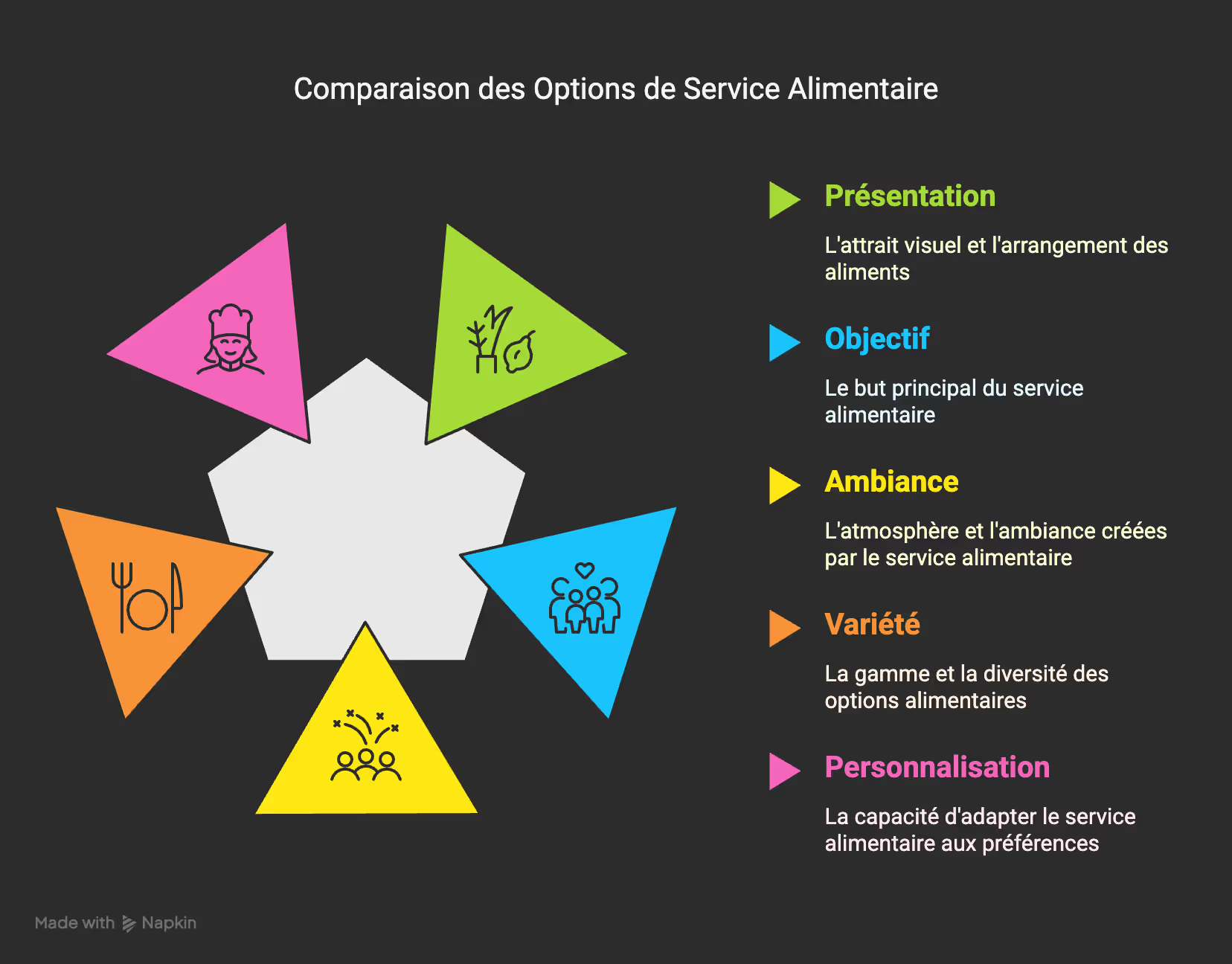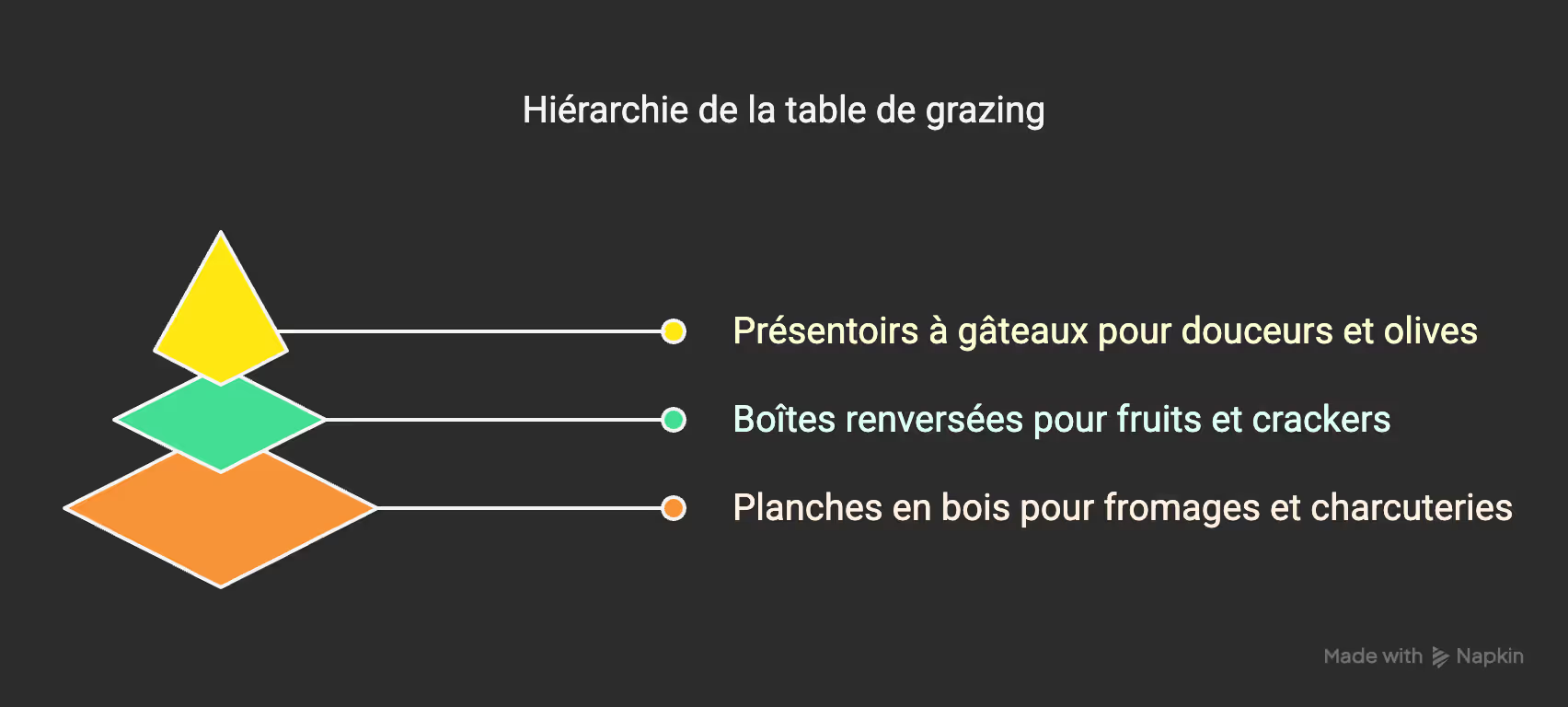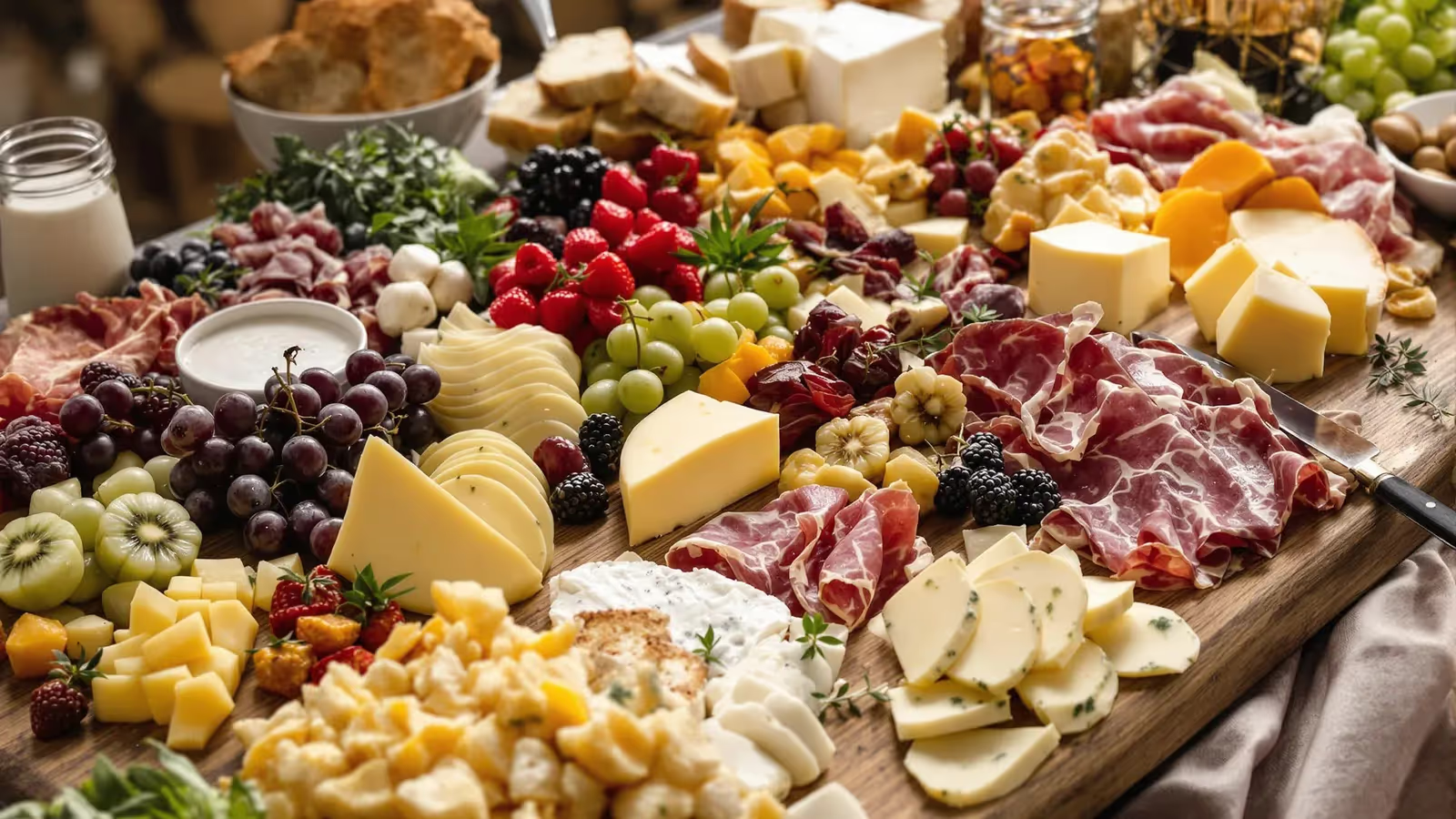Looking for an idea to impress your guests at your next event? The grazing table is a food trend that's transforming the way we entertain. This artistic and generous presentation invites sharing and conviviality, allowing guests to freely pick and choose from a variety of carefully arranged cheeses, charcuterie, fruits and seasonal vegetables. More than just a buffet, the grazing table is a culinary art form that stimulates both the eyes and the taste buds.
What is a Grazing table?
A grazing table is a food display designed to encourage sharing and conviviality, where diners peck at their leisure from a variety of artistically arranged foods.
The idea comes a little from Italian antipasti and Middle Eastern mezze, but with a more modern twist. It's really different from a classic buffet, where everything is neatly arranged and separated. The grazing table relies more on an effect of abundance, with all the products blending together in a natural way. Social networks have helped popularize this concept, particularly Instagram, where photos of these colorful platters are a sensation. What's also appealing is the flexibility of this food trend, which can be adapted to all kinds of events.
Grazing table advantages

Here's how grazing tables differ from classic buffets. It's easy to see the main differences, especially in terms of presentation and ambience.
When it comes to conviviality, grazing tables really make a difference. They encourage guests to move around the table and exchange ideas.
The visual appeal of grazing tables counts for a lot. The varied colors and shapes of the food create a presentation that impresses at first glance. The freer, more artistic organization stimulates guests' appetites far more than a classic buffet. It's also a great conversation piece, as people love to comment on and take photos of these creations. In fact, social networks have played a major role in the popularity of this food trend.
Composition and creation of a Grazing table
Important elements
To make a success of your grazing table, you need to think about including several food families that will make all the difference. I advise you to strike a good balance between savory and sweet products, and to vary the textures so that every guest finds something to his or her liking. The idea is to offer a complete tasting experience, with flavors that complement each other well.
To create a balanced grazing table, remember to include a variety of foods.
- Cheeses: Offer a selection of cheeses, from hard to soft.
- Charcuterie: Offer a wide variety of charcuterie for rich flavors.
- Fruits and vegetables: Add seasonal fruits for a touch of freshness.
For a gourmet and convivial table, remember to vary the pleasures.
Balancing flavors is an important part of creating your grazing table. I recommend playing on the contrasts between salty, sweet, sour and bitter to stimulate everyone's taste buds. Combinations such as cheese with honey or charcuterie with fresh fruit work particularly well. Varied textures add depth and interest to the tasting experience. Remember to alternate crunchy elements such as nuts with softer products.
Presentation techniques
When arranging the food for your grazing table, the idea is to create an effect of abundance that makes you want to peck away. I always place the larger items first, then fill in the gaps with the smaller products.

The use of color is super important to make your grazing table attractive. I recommend spreading colorful foods all over the table to create points of visual interest. Red fruits and green vegetables provide nice pops of color to contrast with the cheeses. You can also add a few decorative elements like rosemary sprigs or edible flowers to give a more natural feel. Don't hesitate to adapt your presentation to the theme of your event, it makes the whole thing more coherent.
Practical tips
To organize your grazing table properly, I recommend you allow around 150g of food per person for an aperitif, and up to 300g for a full meal. I advise you to make your purchases the day before, and to start setting up about 1 hour before your guests arrive.
Here are some common mistakes to avoid for a perfect grazing table.
- Forget: Neglecting product freshness can be detrimental to the experience.
- Ignore: Ignoring guest allergies is a mistake.
- Neglect: An untidy presentation can diminish visual appeal.
Avoid these mistakes for a successful grazing table enjoyed by all.
To guarantee food safety at your grazing table, a few simple precautions are essential. Cheese and charcuterie should not be left at room temperature for more than 2 hours, so don't forget to renew them if your event lasts a long time. For sensitive products such as soft cheeses or fine charcuterie, I often place discreet ice packs under the boards. You should also have small tongs and spoons for each type of food, to avoid cross-contamination.
The grazing table transforms a simple get-together into a truly shared culinary experience. This food trend combines the art of presentation with the conviviality of casual dining, where everyone picks at their own pace. Embark on this gustatory adventure for your next event and surprise your guests with an artistic buffet that stimulates both the eyes and the taste buds.




